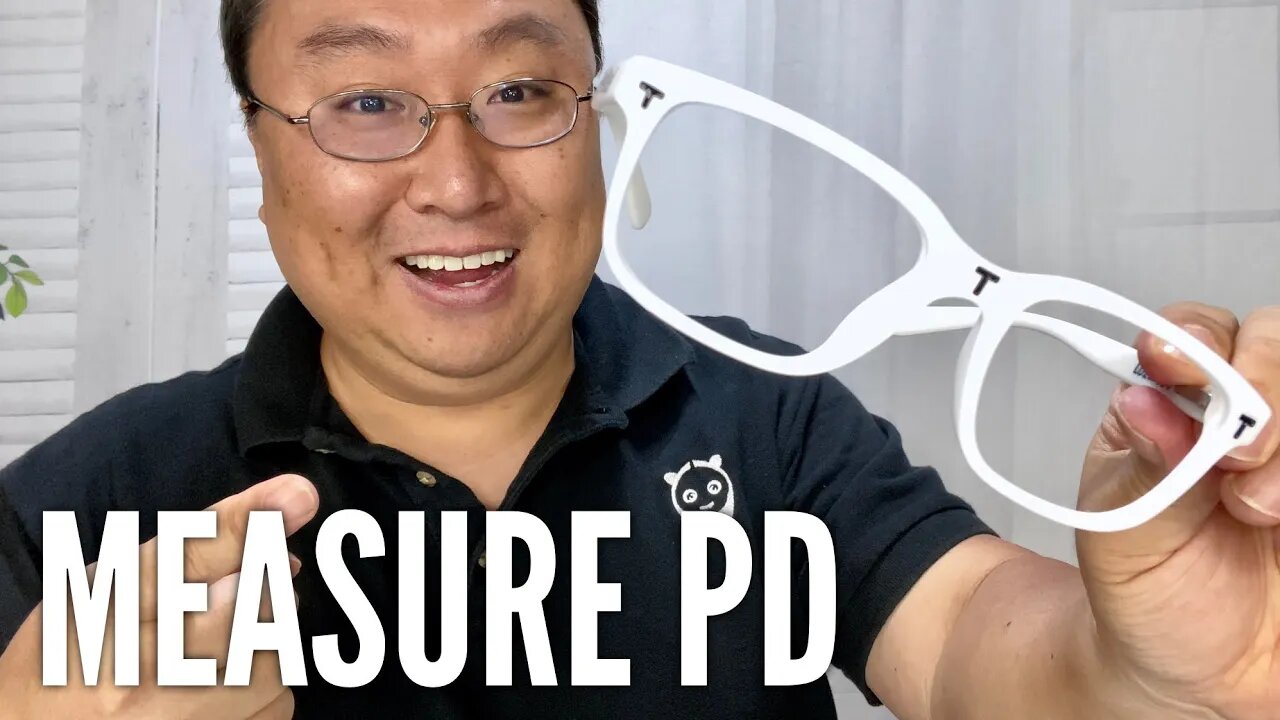Premium Only Content

HOW TO MEASURE PUPILLARY DISTANCE
Get it here... https://geni.us/JUhbRT
https://www.amazon.com/shop/petervonpanda
As an Amazon Associate I earn from qualifying purchases.
EyeQue PDCheck - Smartphone Pupillary Distance Measurement Tool - Instant Results
by EyeQue
EyeQue PDCheck, PDCheck, pupillary distance
EyeQue PDCheck is the fastest and easiest way to obtain your pupillary distance (PD). Pupillary distance is the distance between your eye’s pupils in millimeters (mm). While not a medical record, PD is used for ordering eyeglasses, whether in-person or online. Without a good PD the glasses will not feel good and can cause blurriness and dizziness.
Our specially designed PD Frames and smartphone app work together to produce accurate PD measurements that is as easy as taking a selfie or a picture of a friend. It's as easy as 4 simple steps!
PDCheck
Superior Accuracy
Patented frames create a stable reference point & image processing determines your PD to an accuracy of +/-1 mm.
Accurately measure your pupillary distance instantly.
Securely store your PD in the cloud.
Results include distance PD, monocular PD, and near PD (for reading).
Share your EyeQue PDCheck Frames with family and friends.
We love our customers, contact seller if any issues arise.
What is Pupillary Distance?
Pupillary distance (PD) measures the distance between the centers of your pupils. This measurement is used to determine where you look through the lens of your glasses and should be as accurate as possible. The average adult’s PD is between 54-74 mm; kids' are between 43-58 mm. Your eye doctor will usually measure your PD during an eye exam. However, if it was not given to you, the below 5 steps will help you measure it yourself.
How to Measure Your PD?
Stand 8 in. away from a mirror.
Hold a ruler against your brow.
Close your right eye then align the ruler’s 0 mm with the center of your left pupil.
Look straight then close your left eye and open your right eye.
The mm line that lines up to the center of your right pupil is your PD.
What is pupillary distance (PD)?
Having your PD handy is just as essential as your prescription when it comes to ordering a new pair of eyeglasses or prescription sunglasses online.
The average pupillary distance for an adult is about 63 mm, but this is not a number you’ll want to guesstimate.
After all, measurement can vary widely — between 51 mm and 74.5 mm for women and 53 mm and 77 mm for men, according to military-recorded measurements.
Single PD or dual PD
There are two primary methods for PD measurement: single PD and dual PD.
Single PD (or binocular PD) is the measurement from pupil to pupil between each eye.
Dual PD (or monocular PD) is the measurement from your nose bridge to each eye.
Dual PD is believed to be the most accurate since many people may find their nose-to-pupil measurement is not equidistant on both sides.
PD is especially critical when fitting glasses with progressive lenses, which requires precise lens-to-pupil alignment to ensure comfortable vision at all distances.
How to measure pupillary distance
-
 3:32
3:32
Peter von Panda
1 year agoFree Wendy's Frosties For A Year?
888 -
 1:18
1:18
Simon Z Jewelry
3 years agoHow to measure your ring size at home.
18 -
 2:17
2:17
MysticMoonShopInc
3 years agoHow To Measure Your Wrist For A Bangle Bracelet
50 -
 LIVE
LIVE
Russell Brand
2 hours agoDigital Censorship & Political Warfare: X Attacked, Rand Paul Rebels, Free Speech on Trial – SF551
1,303 watching -
 LIVE
LIVE
tastylive
1 hour agoLIVE Stocks, Options & Futures Trading with the Pros! (Market Open -> Close & More) March 11th, 2025
17 watching -
 LIVE
LIVE
Simply Bitcoin
2 hours agoTrumps Bitcoin Embrace TERRIFIES The EU | EP 1200
301 watching -
 LIVE
LIVE
The Charlie Kirk Show
1 hour agoThe Left Regroups + Deporting Hamas Lovers + Love Is Blind? | Rep. Donalds, Dr. Arnn | 3.11.25
5,854 watching -
 30:41
30:41
BonginoReport
20 hours agoTrump Pulls Ultimate Uno Reverse Card On Illegals (Ep.1) - 03/10/2025
87.1K484 -
 34:53
34:53
Grant Stinchfield
19 hours agoDoctored Photos and Phony Stats, How The Media is Weaponizing the Measles... Again!
1.68K4 -
 LIVE
LIVE
TheAlecLaceShow
2 hours agoGuests: Senator Bernie Moreno & Anne Fundner | Trump Calls For Massie Primary | The Alec Lace Show
125 watching